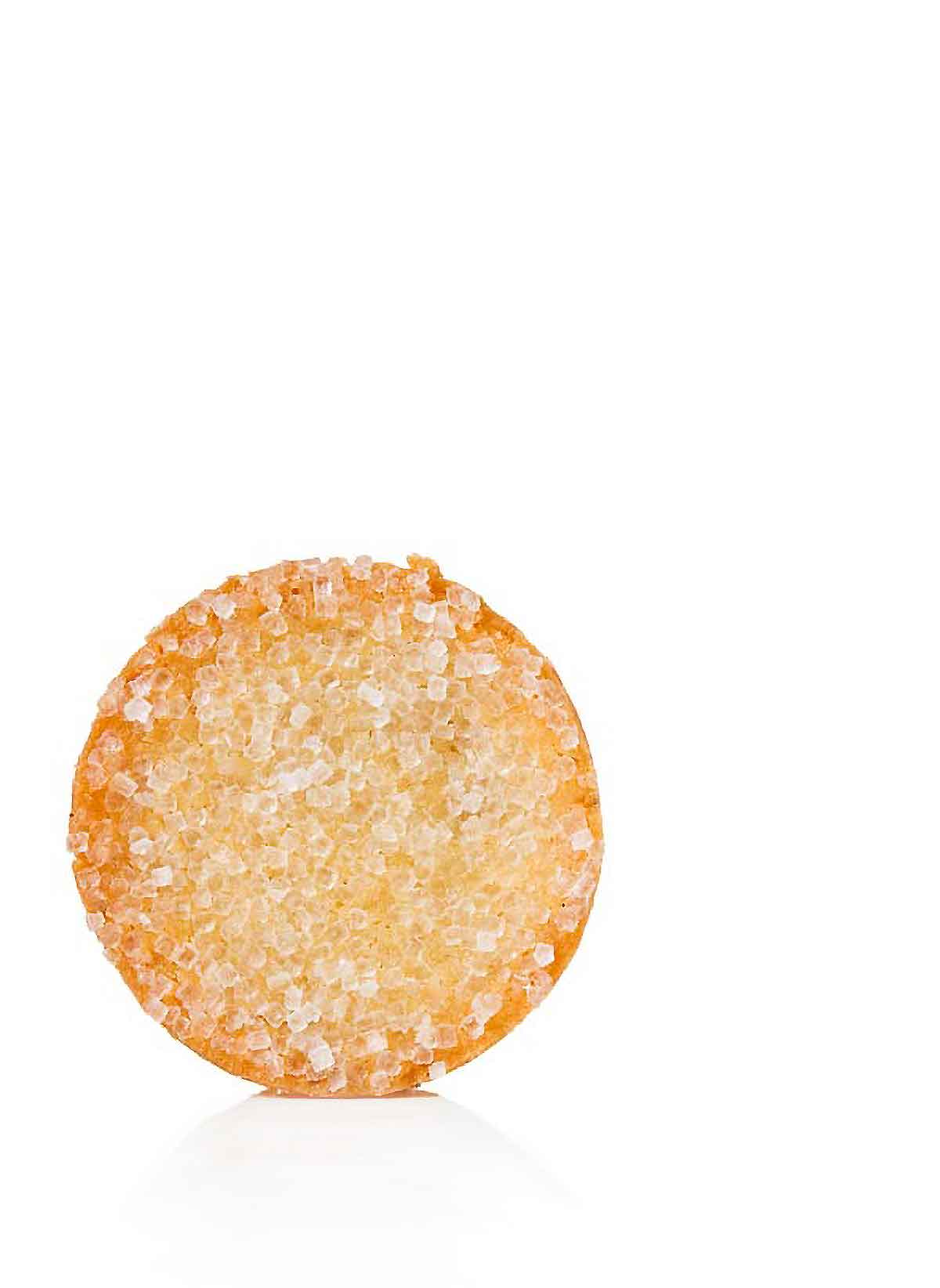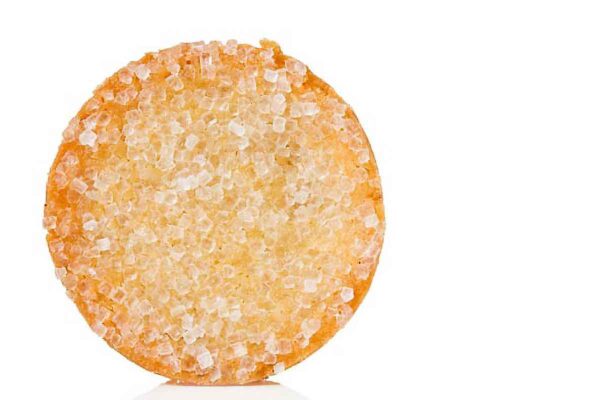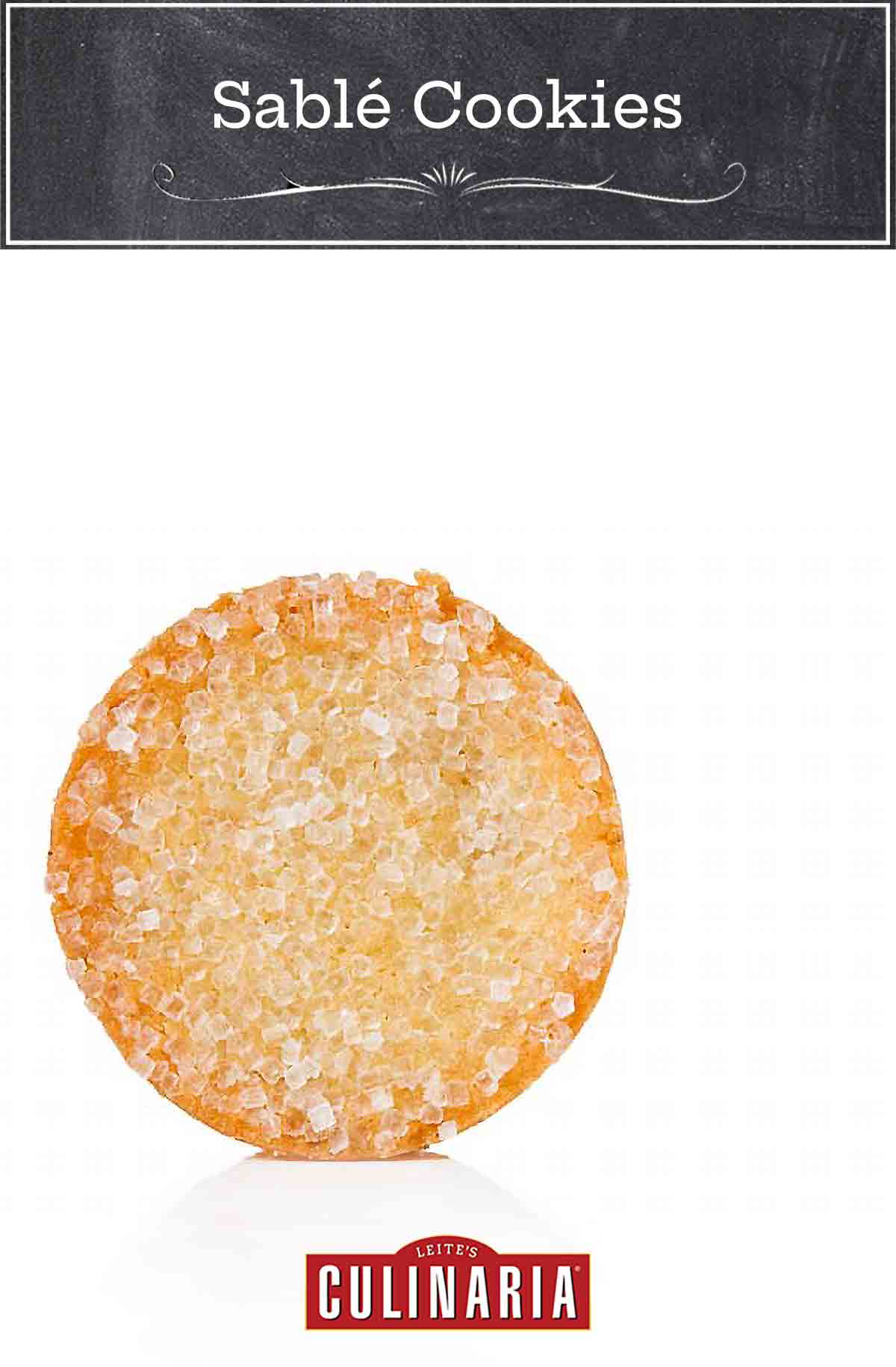
When David asked the charming Dorie Greenspan what her cookie du moment was during our Christmas podcast, this was her answer. Although actually, we suspect this would be her response no matter what time of year we asked given the passion she expressed for the simple French sablé. We’re not about to disagree. With its crispy, perfect exterior and cakey, tender interior, it’s got a sort of simple elegance, as Dorie says. Can’t think of an occasion when that wouldn’t be welcome.–Renee Schettler Rossi
Want to Save This?
LC Sneaky Sablé Note
Leave it to the French to create a cookie that is as graceful at accommodating other ingredients as a Parisian is at tying a scarf about her neck. Spices. Citrus zests. Nuts. Icings. You’ve got not just one cook, but countless. Sneaky sable.

French Sablé Cookies
Equipment
- 2-inch baking rings (may substitute 2-inch round cookie cutters and muffin tins)
Ingredients
- 2 sticks unsalted butter, diced, at room temperature
- 1/2 cup granulated sugar
- 1/4 cup confectioners’ sugar, sifted
- 1/2 teaspoon fine sea salt
- 2 large egg yolks, at room temperature
- 2 teaspoons vanilla extract
- 2 cups all-purpose flour, plus more for the work surface
- Sanding sugar, for decorating
Instructions
- With a mixer on low speed, beat the butter, sugars, and salt together for 5 minutes, until smooth. Beat in the yolks, then the vanilla. Scrape the bowl and add the flour all at once. Mix only until the flour is incorporated.
- Divide the dough in half, flatten into disks on a lightly floured surface, and place each between sheets of parchment or wax paper. Roll the dough 1/4 inch thick. [Editor’s Note: Just like in the story of Goldilocks, you want the dough to be not too thin and not too thick but just right at 1/4 inch thick. Trust us.] Refrigerate for at least 2 hours or freeze for at least 1 hour.
- Center the oven rack and preheat the oven to 350°F (177°C).
- If using 2-inch baking rings, cut out the first batch of cookies and, using an offset spatula, gently transfer the cookies to a baking sheet lined with parchment paper. If using 2-inch cookie cutters, cut out the first batch of cookies and, using an offset spatula, gently transfer the cookies to muffin tins to help the cookies retain their perfect shape during baking.
- Sprinkle the cookies with sanding sugar and bake for 18 to 22 minutes, until the cookies are golden brown on their bottoms and around their edges. Cool for 15 minutes on the baking sheet or in the muffin tin, then transfer to a wire rack to cool completely.
- Continue cutting and baking, always using a cool baking sheet as you gather the scraps of dough, roll, chill, cut, and bake. We think you can take it from here. Find information on storing cookies here.
Explore More with AI
Nutrition
Nutrition information is automatically calculated, so should only be used as an approximation.
Recipe Testers’ Reviews
“These cookies are CRAZY good!” were the exact words of my six-year-old daughter. These were buttery, crisp, and absolutely perfect. I can’t say enough happy things about these cookies. These french sablé cookies are out of this world good and quite possibly at the top of my favorite cookie list. The only thing that I’d do differently next time is double the recipe! I also thought that the instruction to bake the cookies in muffin tins weren’t necessary. I made two batches and found that the cookies maintained their shape without use of the muffin tin. Following the directions for the thickness when rolling out the dough is key. I rolled one batch to about 1/8 inch thick and the resulting cookies proved to be too thin (although I had no trouble eating those anyway.) The sanding sugar adds the perfect amount of crunch.
What brioche is to plain white bread, this French sablé cookies is to the standard sugar cookie. These are incredibly buttery and rich with just the right amount of sweetness. The sablé is a little like shortbread with the delicateness of pie crust. I used a 12-cup muffin pan to bake my sablés. I began cutting out parchment paper circles and realized that would be an exercise in frustration. I decided to use cupcake liners instead. Using the cupcake liners in the muffin pan ensured a perfectly round, 2-inch diameter cookie that was easy to remove from the pan once baked. Even though I overbaked my first batch, they still tasted fantastic. Note that using colored paper liners may cause some smoking. However, there was no impact on the flavor of the cookie. In the future I’ll use unbleached paper or silicon liners. My first batch was closer to 1/8 inch thick and only took 10 minutes to bake. I watched the remaining batches closely to get the golden color I wanted. Because the cookies were in the paper liners, I could remove them from the muffin tin immediately after they came out of the oven. The muffin tin does get a bit greasy every other batch, so I wiped it out with a paper towel in between batches.
I loved these. This is a simple, easy-to-prepare, anyone-can-do-it sugar sablé cookie recipe. It was really easy to follow, more so than some similar cookie recipes. My only question was whether to beat the yolks before incorporating or just add them, as they are. I opted for the latter option and it was fine. These cookies had the right balance of chewy and soft, had a nice flavor, and were appropriately crunchy on the outside. The sanding sugar is MUST for these, or else you lose a bit of the sweetness I think these cookies need. My only suggestion is I wonder if you could make these with pure vanilla rather than extract. The vanilla flavor may be more intense, and I always like the little dots of a pure vanilla bean.
These are some of the best French sablé cookies I’ve ever made. They’re visually stunning. They aren’t too sweet. The butter flavor stands out. But the texture is really the star of the show. These sugar cookies have the wonderful crumbly, sandy texture of a good shortbread cookie. I forgot my dough in the freezer until it was frozen solid, so I let it rest on the counter for a few minutes to soften and it worked just fine. I didn’t chill my scraps after re-rolling them and that worked just fine. The dough was very easy to work with, both before and after chilling. I rolled the dough 1/4 inch thick, as directed. (I even measured it with a ruler.) My cookies were done, and maybe a tiny bit overdone, after 9 minutes, not 18. I baked half of the batch in muffin tins, as instructed. I baked the other half on a parchment-covered baking sheet to see if they’d hold their shape. They weren’t quite as uniform as the muffin tin cookies, and their edges flattened a bit and browned more than the cookies in the muffin tins, but the difference was very slight. They’re especially good as soon as they cool. They soften just a bit when stored, but they’re still one of the best butter cookies I’ve ever made
These French sablé cookies have the soft, crumbly texture and buttery goodness that a sablé should have. I used a 2-inch fluted cutter and the cookies fit perfectly in my standard-size muffin pans. The dough is very easy to prepare and can be made in a standing mixer in a matter of minutes. I usually make sablés by forming logs, chilling them, and then slicing them into rounds. I very much preferred this method. Cutting the cookies out of rolled dough created a much more perfect shape that held up very well during the baking process, thanks to the suggestion of muffin pans as a substitute for baking rings. I was pleasantly surprised that the cookies released quite easily from the muffin pans (due, I believe, to the dough’s high butter content). This cookie recipe is definitely a keeper.
I have to admit, I was skeptical when I couldn’t locate baking rings at my local cooking stores and had to resort to placing my dough in a muffin tin. But these sablé cookies are truly lovely, tasty treats that even non-dessert folks will enjoy. I placed my dough in the freezer for just under an hour. A quick note for other newbies: my metal 1/4 cup measuring cup worked as the perfect-size cookie cutter. Baking time was 20 minutes.
This cookie has a simple set of ingredients yet results in a sophisticated and delicious cookie that’s crisp and buttery. It would be an excellent addition to a holiday cookie plate because it balances out all of the fancy decorated cookies yet can hold its own when it comes to taste. While the process for making the cookies seems a bit fussy, the alternative methods resulted in the same cookie and the same buttery goodness. In fact, I like the alternative methods for this sablé better than the method where you form the dough into a log, chill it, and slice it. That approach is super easy, but I always end up with a round-ish cookie with one flat side. I think the baking rings method in this recipe is meant to reduce this look, but unless you expect absolutely perfect circle cookies, it isn’t worth the fuss or going out and buying several baking rings. What’s key to maintaining the circle shape is to cut the cookie dough when it is very cold and that’s why I preferred chilling the dough in the freezer for an hour. I baked cookies that were 1/4 inch thick and 2 inches in diameter. That shortened the baking time to 12 to 15 minutes. Make sure to turn your pan around about halfway through the baking time. I made some of the cookies without the sanding sugar and they were delicious and still sweet. The sanding sugar adds a little specialness to the cookie, but it’s by no means necessary.
Alternative method 1 (cookie cutter+ muffin pan): It was suggested to use a regular cookie cutter to make the cookies and then put the cookie in the bottom of a muffin pan to maintain the circle shape and this method worked just fine. Still kind of fussy to me, but it does work and you don’t need a bunch of baking rings. I lightly buttered the bottom of each muffin cup and didn’t have any issue with sticking. This worked with a 2-inch biscuit cutter and the cookies fit perfectly in my muffin pans. I suggest checking to make sure the cookie cutter size does fit in the bottom of the muffin pan first since I had another muffin pan I didn’t use since it had a smaller base than the others.
Alternative method 2 (cookie cutter+sheet pan): I tried a typical approach for rolled cookies and just ended up putting the cookies on a parchment-lined sheet pan. Because the dough I used was very cold, it easily held its round shape even in transitioning it from the cookie cutter to the pan. For the scraps, I rolled them back out into a 1/4 inch thickness and popped them back in the freezer. The cookies didn’t really spread out and kept their round shape. Granted, they didn’t have the perfectly perpendicular straight sides that the cookies would have with a baking ring, but none of my tasters complained or even noticed. This was the easiest method for making these cookies and the one that I’ll continue to use.













Best sables recipe …
really buttery and delicious ..I just can recommend this..
Thanks, Babette!
Rock my world? Oh yes they did! I have made cut out cookies for years. Always going back to the recipe that is in a red book. Never again. These were a most awesome cookie. The dough was easy to put together and we all loved them. Thanks Dorie and David for sharing.
Kelly, my pleasure! This what I love to hear. I’ll pass your thanks on to Dorie.
Oh thank you for posting this. I am heading home to Australia for Christmas and can’t wait to bake these up with my mum. We’re both big Dorie fans!
You’re welcome, Mardi. I hope you and your mom have a great time making the cookies, and I hope your whole family have a wonderful holiday season.